The most famous church in the world can be found in Vatican City, the small territory of the Pope within the city of Rome. This enormous structure makes you stand in awe, both on the outside and inside.
In this post, you’ll discover the ultimate list of interesting facts about St Peter’s Basilica, one of the ultimate marvels of architectural genius.
1. St Peter’s Basilica is the largest church in the world
The St Peter’s Basilica is a church of monumental scale. It’s the largest church in the world and its dimensions are dazzling!
- 220 meters (720 feet) in length.
- 150 meters (490 feet) wide.
- Maximum height of 136.6 meters (448 feet)
- 42 meters (138 feet) diameter of the dome.
- Covers an area of 21,095 square meters (227,070 square feet).
We don’t know exactly how much the construction cost, but at least 46,800,052 ducats (gold or silver coins) were spent before the interior decorations started, a massive amount!

2. It’s located in the heart of Rome
The church is located right in the heart of Rome in the Papal enclave referred to as Vatican City. It’s essentially part of the Vatican Museum, one of the richest collections of art in the world.
St Peter’s is located on the left bank of the Tiber River near the Janiculum Hill, just a few hundred meters to the west of the Castel Sant’Angelo, a castle and museum which originally served as the Mausoleum of Hadrian and multiple other Roman Emperors up until the reign of Caracalla in the 3rd century.
The Roman Forum, the busy marketplace of Ancient Rome and a major archaeological site near the Roman Colosseum, is located a few kilometers to the southeast of the Basilica.
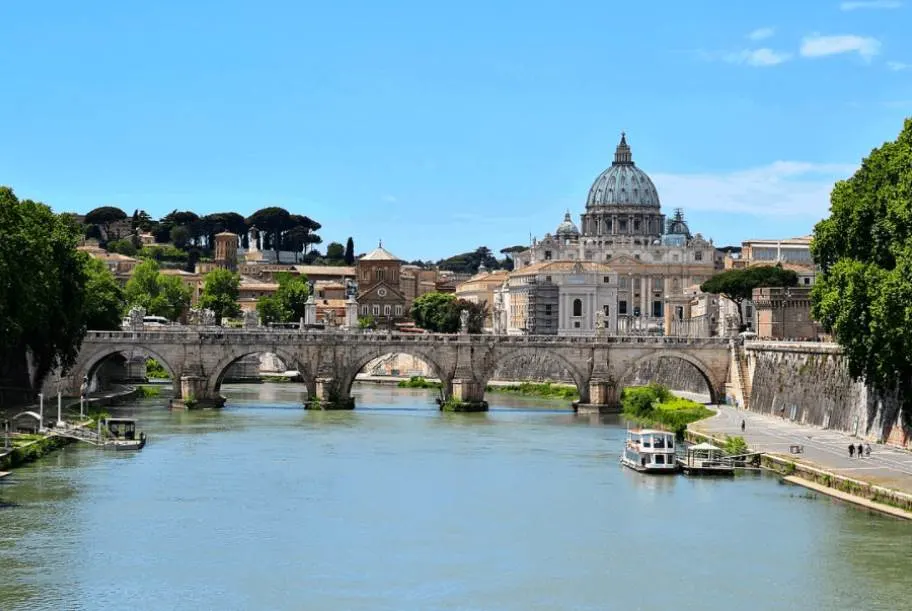
3. The location is believed to be the burial place of Saint Peter
The location of the church is traditionally believed to be the burial location of Saint Peter, the leader of the 12 Apostles of Jesus Christ. Because of this, it’s considered to be the holiest site in all of Christianity and Catholic traditions.
Saint Peter became the Bishop of Antioch and later the first Bishop of Rome, and is believed to have been buried directly below the main altar of the Basilica.
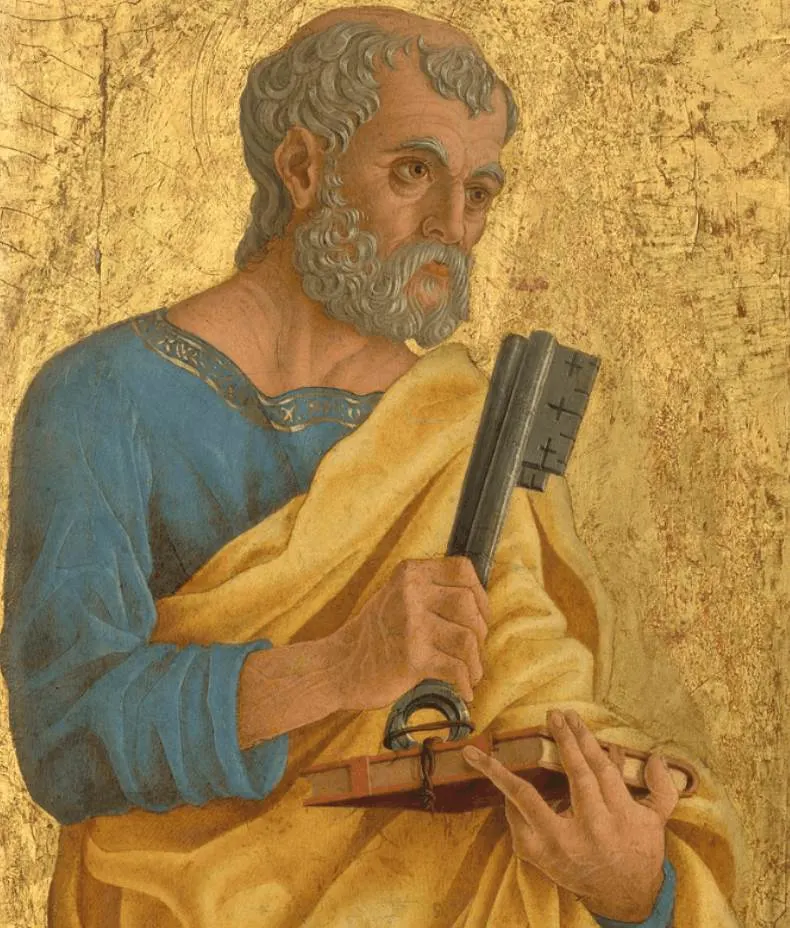
4. It’s officially not the most important church in the world

The Basilica is one of 4 Papal Basilicas in Rome, the other ones being:
- Archbasilica of Saint John Lateran
- Basilica of Saint Mary Major
- Basilica of Saint Paul Outside the Walls
One of the most remarkable facts about St Peter’s Basilica is that it’s not the mother church of the Catholic Church, nor is it the cathedral of the Diocese of Rome. Both these titles are reserved for the Archbasilica of Saint John Lateran.
It is, however, considered to be a church holding a unique position in the Christian World and it’s considered by many Christians to be the holiest place on the planet.
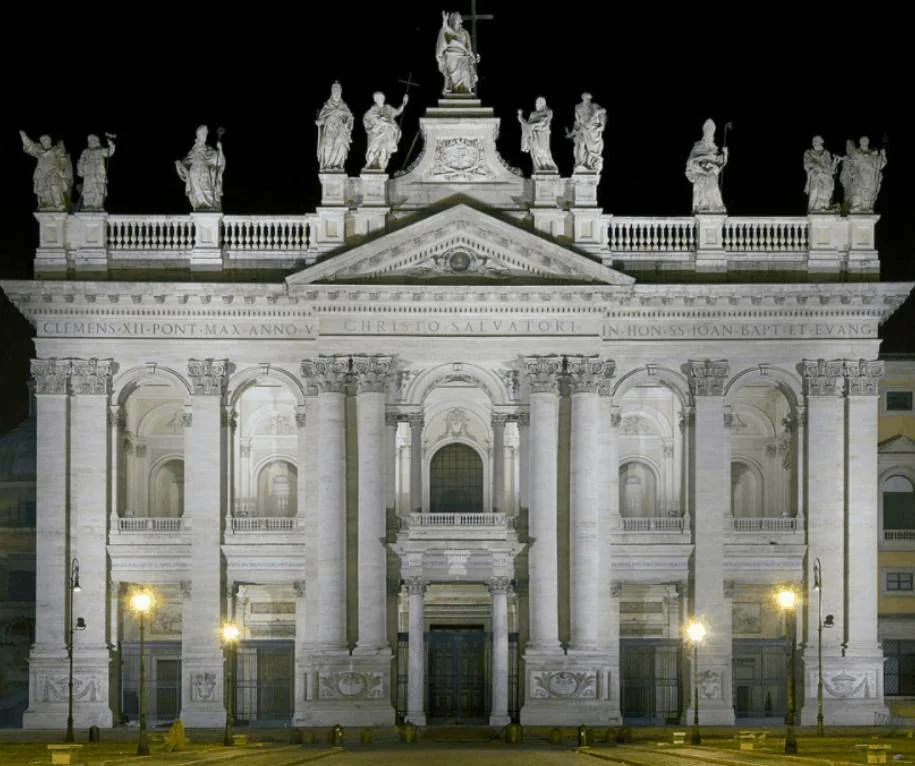
5. The original church on the site dates back to the 4th century
Even though Saint Peter was crucified after the Great Fire of Rome in 64 A.D. during the reign of the infamous Emperor Nero, he played a major role in the development of Christianity.
It wasn’t until the reign of Roman Emperor Constantine the Great in the 4th century between 319 and 333 A.D., however, that the religion was officially recognized. After all, he was the first Roman Emperor who had converted to Christianity.
He was also the man who instigated the construction of the Old St Peter’s Basilica, which stood on the location of the current church for nearly twelve centuries between the years 360 and 1505.
It was built on top of the Circus of Nero where Saint Peter was crucified. The Old Basilica gained massive importance over the centuries and was quite impressive as well with a length of 103.6 meters (340 feet).
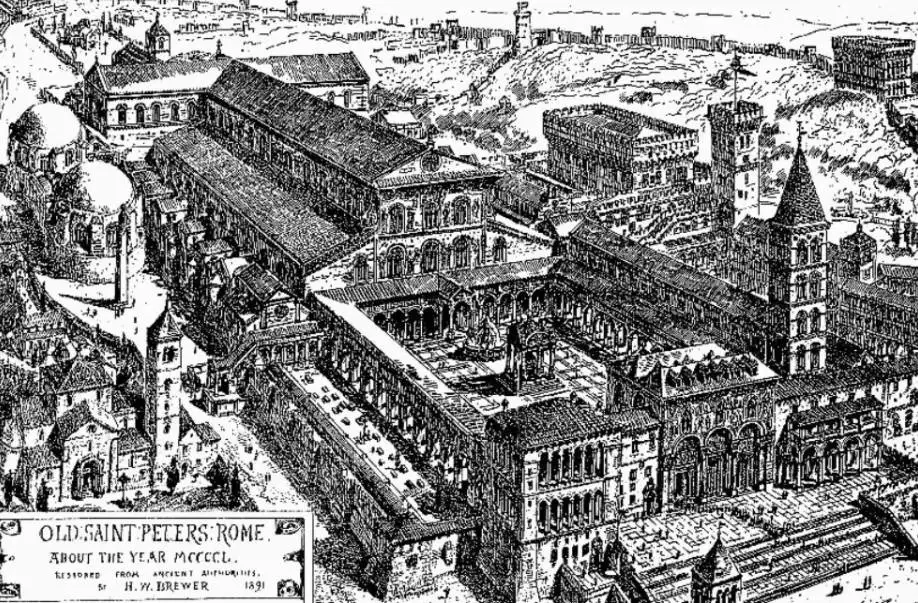
6. It took 120 years to complete the massive church
By the 15th century, the church had fallen in total disrepair. It was Pope Nicholas V (1447–1455) who was the first to commission the repair of the Old Basilica and ordered the demolition of the infamous Roman Colosseum to provide the materials.
Not much had been done by the time he died and it wasn’t until the early 16th century when Pope Julius II made plans to completely demolish the old church and build the most magnificent church ever constructed to house his tomb.
The first stone of the current St Peter’s Basilica was laid on April 6, 1506, and it was completed and consecrated 120 years later on November 18, 1626!
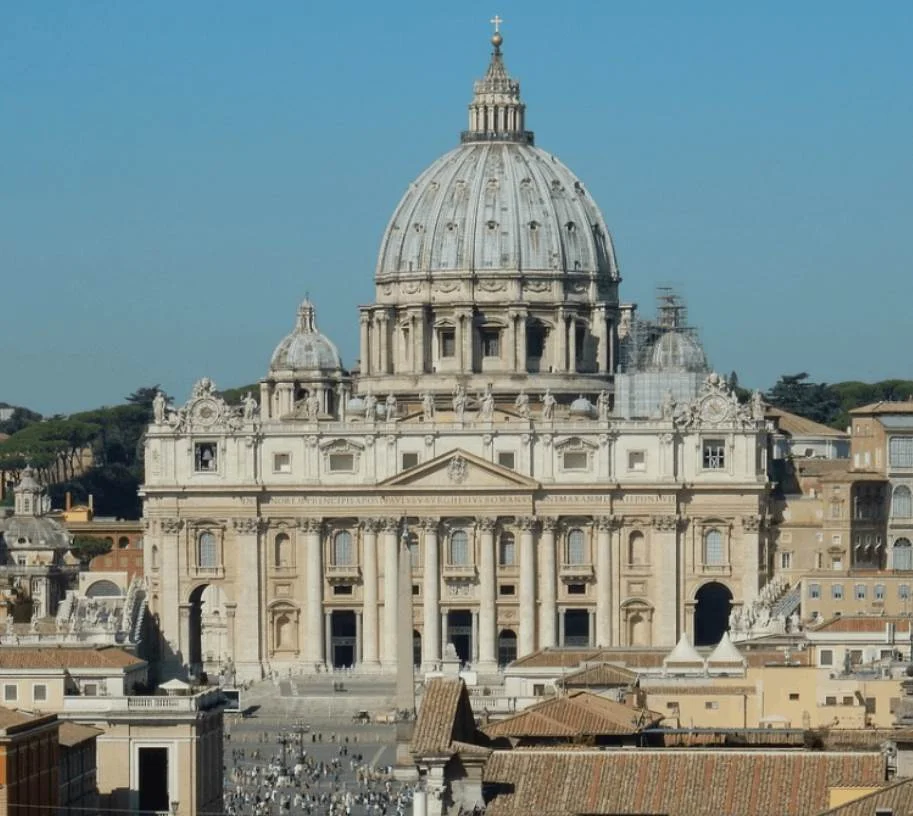
7. Multiple famous architects had a hand in its design
While the Old Basilica was being demolished in the year 1505, Pope Julius II launched an architectural competition to come up with a design for what would become the “grandest building in Christendom.”
Numerous famous Renaissance artists submitted their designs, many of which still survive and are held at the Uffizi Gallery in Florence. It was eventually the plan submitted by Donato Bramante that won.
His plan consisted of a huge Greek Cross covered with a fabulous dome. While Bramante never saw much of his design realized as he died in 1514, all of the successive plans from the numerous architects that worked on the structure were based upon his.

8. Its dome was inspired by two other famous domes
The dome of the Basilica was inspired by the circular dome of one of the most famous ancient buildings in Rome, the Pantheon. While Bramante certainly got most of his inspiration from the dome located just a few hundred meters away, he made some crucial changes to it as well.
While the dome of the Pantheon is supported by a continuous wall, the dome of St Peter’s is supported by 4 large piers that are each covered with their own smaller domes.
In that sense, it is more similar to a dome located in the birthplace of the Renaissance, the Cathedral of Florence. The dome of this magnificent cathedral was designed by Filippo Brunelleschi who is considered to be the founding father of Renaissance architecture.
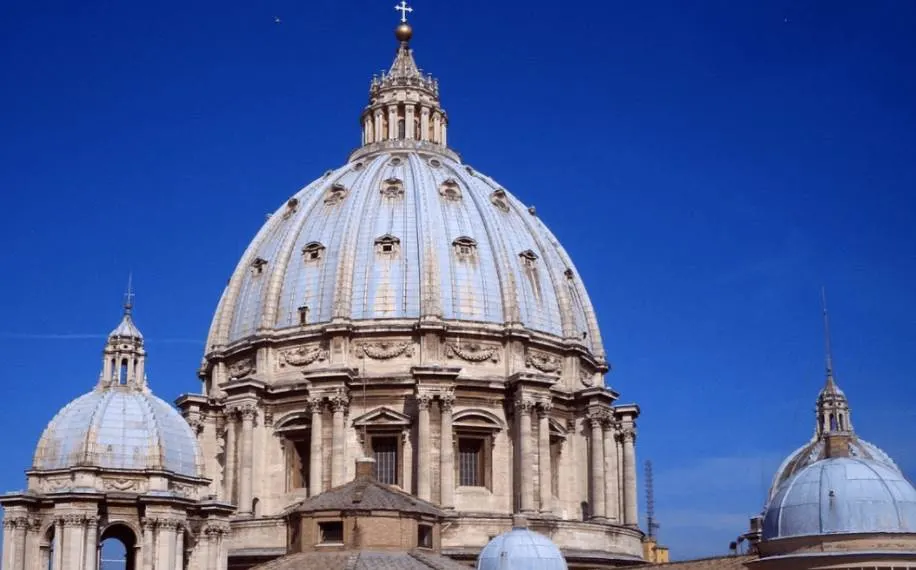
9. It’s considered to be the epitome of Renaissance architecture
Donato Bramante is considered to be one of the greatest architects of the Renaissance. He got his inspiration from the founding father of the Renaissance, Filippo Brunelleschi.
When Bramante died in 1514, he was replaced for about 6 years by Raphael Umbrias. Work stalled for quite a bit when Raphael died in 1520 and he ended up being replaced by Michelangelo in the year 1547.
One of the most fascinating facts about St Peter’s Basilica is that many of the greatest architectural minds collaborated on what would become the grandest church ever constructed. Therefore, it’s more than fair to say that St Peter’s Basilica is the epitome of Renaissance architecture and became the inspiration for numerous churches all across the world!
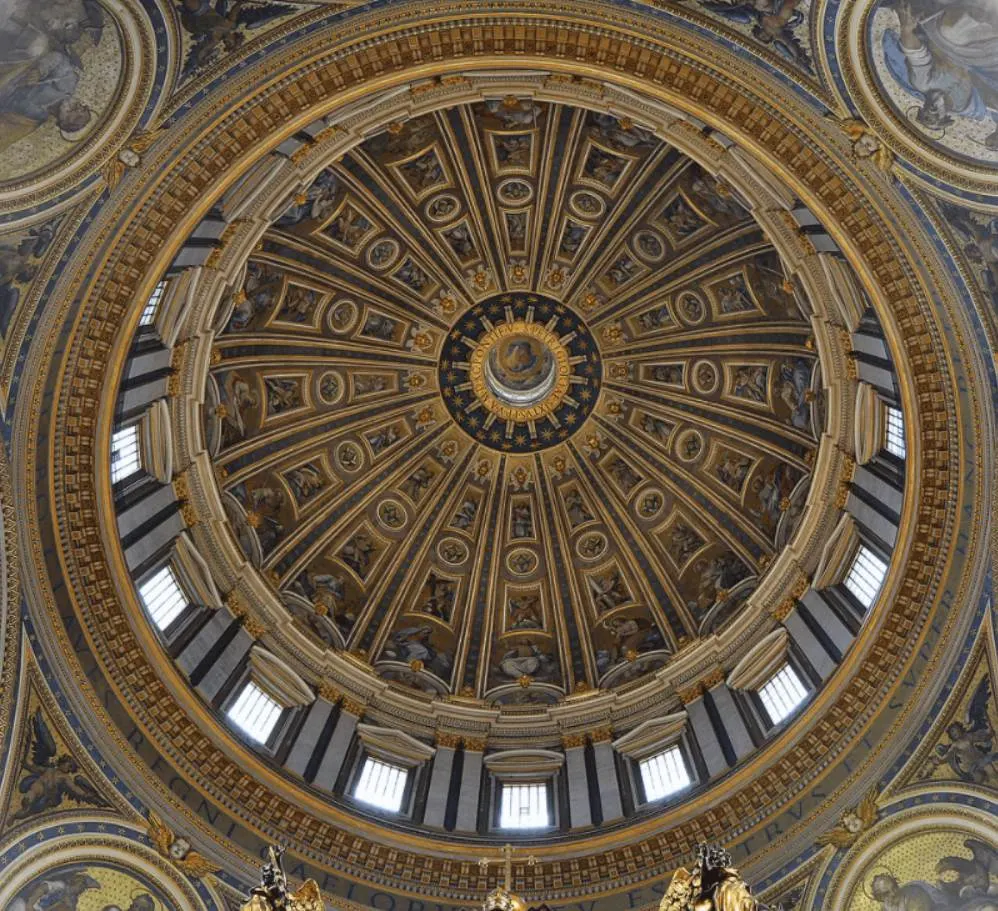
10. The church is literally an immense graveyard
Since the original church of the 4th century was built on top of the shrine that commemorated the burial place of Saint Peter, most of the early popes wanted to be buried inside it as well.
The crypt of the church consists of over 100 tombs and 91 popes have been buried here.
This is an ongoing tradition as well. Pope Julius II commissioned the construction of the new Basilica in the early 16th century so he could have a grandiose tomb (even though he’s not buried here but in the Church of St Peter ad Vincula), but more recently, Pope John Paul II was entombed inside the Basilica’s crypt on April 8, 2005.

11. The façade is considered to be the least attractive part of the design
One of the most remarkable facts about St Peter’s Basilica is that in the early 17th century, about 2 decades before the church was completed, parts of the original 4th-century church were still standing.
It was only then that it was decided to extend Michelangelo’s building to include an additional nave and façade, effectively changing the design from a Greek Cross to a Latin Cross. After all, a Greek Cross was regarded as a Pagan symbol as the Renaissance period was replaced with the Baroque.
The travertine stone façade is massive as it’s 114.69 meters (376.3 feet) wide and 45.55 meters (149.4 feet) high!
Regardless of its size, the façade wasn’t received well upon completion. The main reason is the fact that the committee deciding on the design didn’t want to deviate from Michelangelo’s original plan too much and they were pressured to get the building completed.
After all, they had been working on it for over 100 years by then!
The façade is topped by the statues of Jesus Christ and 11 of his apostles except for Saint Peter whose statue is located left of the stairs.
The inscription on the huge frieze reads:
IN HONOREM PRINCIPIS APOST PAVLVS V BVRGHESIVS ROMANVS PONT MAX AN MDCXII PONT VII
Inscription on the frieze of the façade.
This translates to:
“In honor of the Prince of Apostles, Paul V Borghese, a Roman, Supreme Pontiff, in the year 1612, the seventh of his pontificate.”
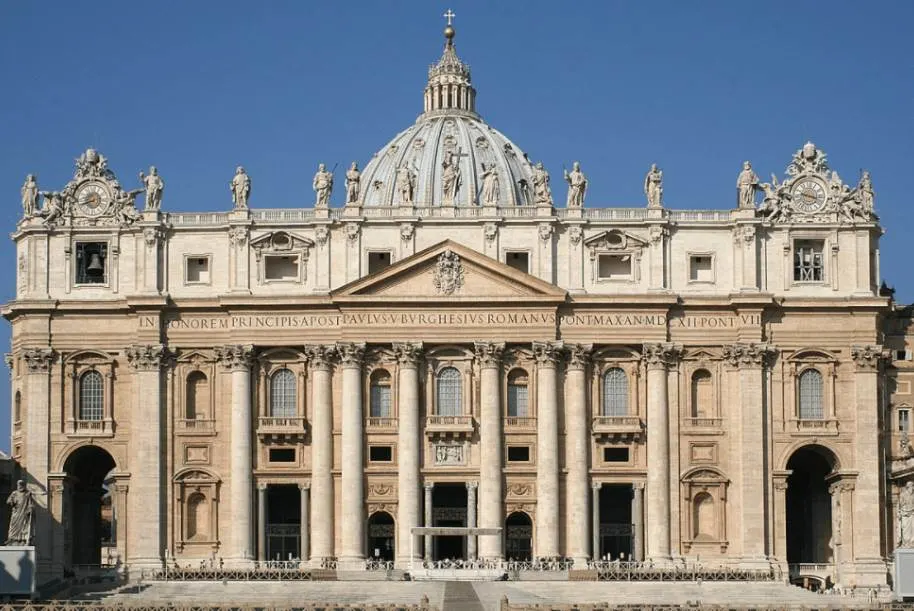
12. A famous Baroque artist worked on the inside decorations for 50 years
Imagine being a young boy who is interested in sculpting and visiting St Peter’s Basilica as hundreds of people are working to get it completed. The idea comes to mind that you want to create art intended to decorate this amazing structure.
This little boy was Gian Lorenzo Bernini (1598–1680), one of the most famous Baroque artists in history, who dreamed of building “a mighty throne for the apostle.”
His dream came true as he received his first commission in 1626 and spent over 50 years of his life creating masterpieces to decorate the most wonderful church in the world, including the throne, referred to as Baldacchino, he dreamed of creating as a little boy!

13. Gian Lorenzo Bernini also designed the St Peter’s Square
Bernini’s work wasn’t limited to creating pieces of art to decorate the interior of the church. Apart from being the leading sculptor of his time, he was also a renowned architect who would surely have had a hand in the design of the church if he was born 100 years earlier.
Since the church was completed, he was allowed to create its extension, one of the most famous squares in the world referred to as “St Peter’s Square” or “Piazza di San Pietro” in Italian.
The Obelisk, which is referred to as “The Witness” because it’s believed it was present the moment Saint Peter was crucified in Nero’s Circus, is the centerpiece of the square.
Around it, Bernini designed two sections of colonnades to create a square that has been referred to as “the greatest of all atriums before the greatest of all churches of Christendom.”
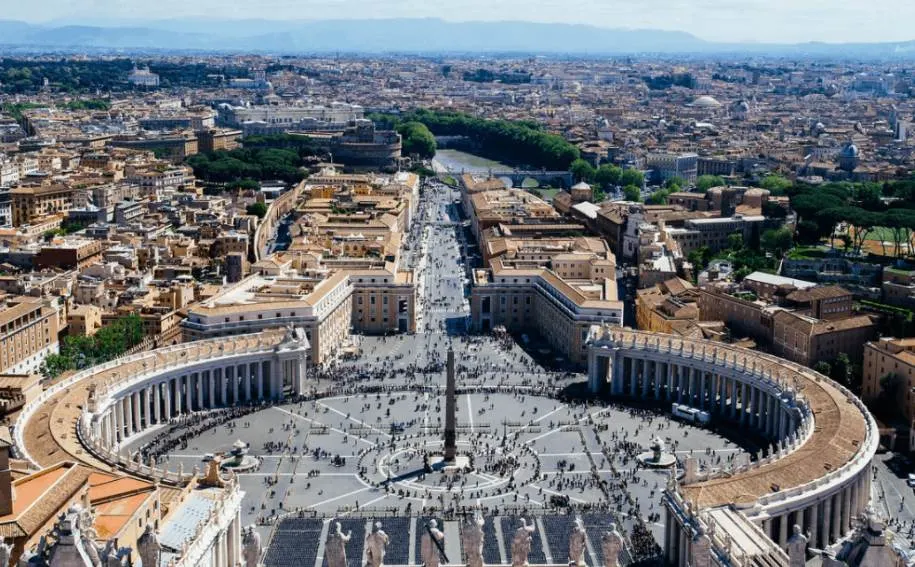
14. One of Michelangelo’s ultimate masterpieces is on display in the Basilica
Bernini wasn’t the only artist to create art that now decorates the interior of the church. The original commission of Julius II was to have a tomb decorated with numerous sculptures created by the man who would eventually have the biggest stake in the design of the church, Michelangelo.
It’s funny how things sometimes turn out, don’t you think?
The tomb was eventually placed in another church in Rome, and the interior of the Basilica now houses one of the most famous sculptures of Michelangelo, the Pietà, which he created between 1498 and 1499. It can be found in the north aisle.
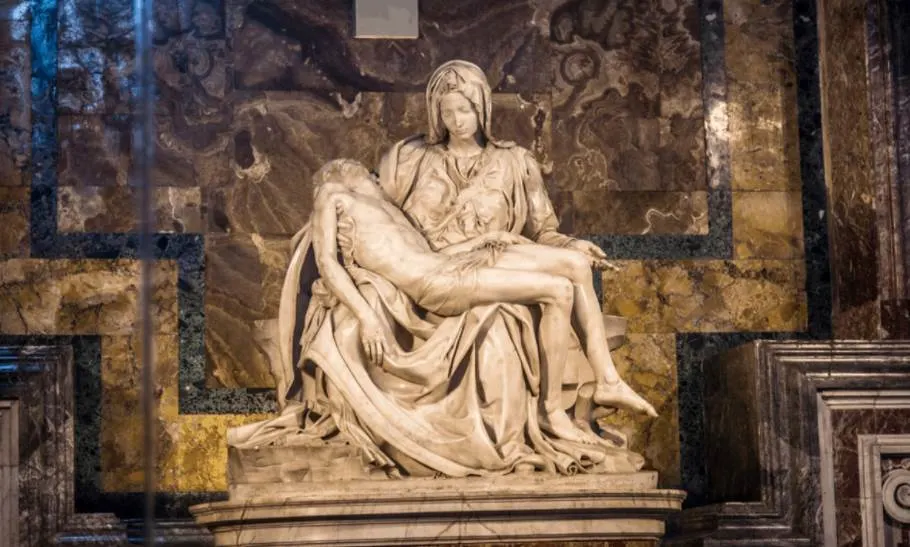
15. St Peter’s Basilica is one of the most visited places on earth
Apart from large crowds assembling on St Peter’s Square while the Pope presides at several liturgies throughout the year, the Basilica itself is one of the most visited places in Rome.
On average, between 40,000 and 50,000 people enter the church every day, resulting in well over 10 million yearly visitors. This makes the Basilica one of the most visited places in the world as well!

